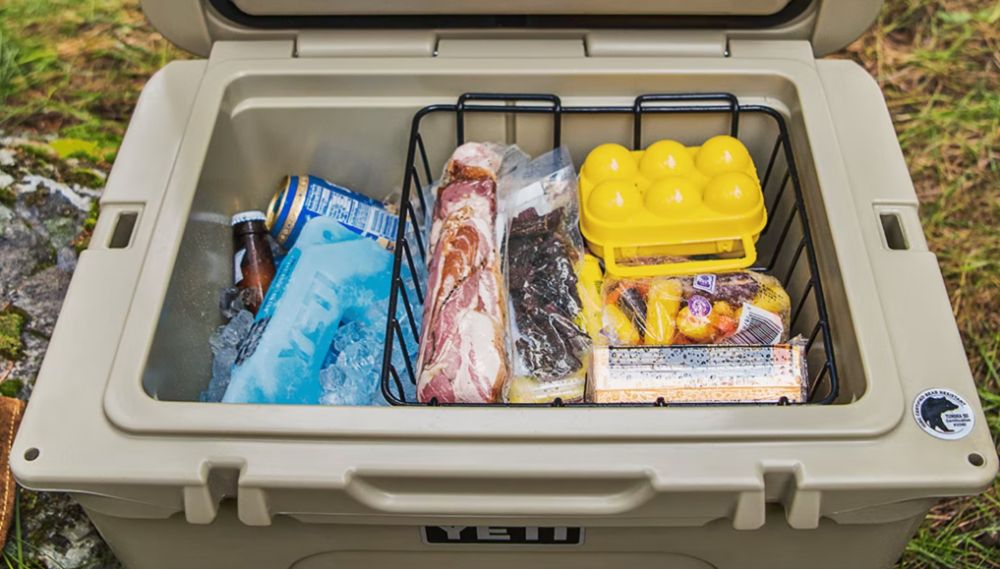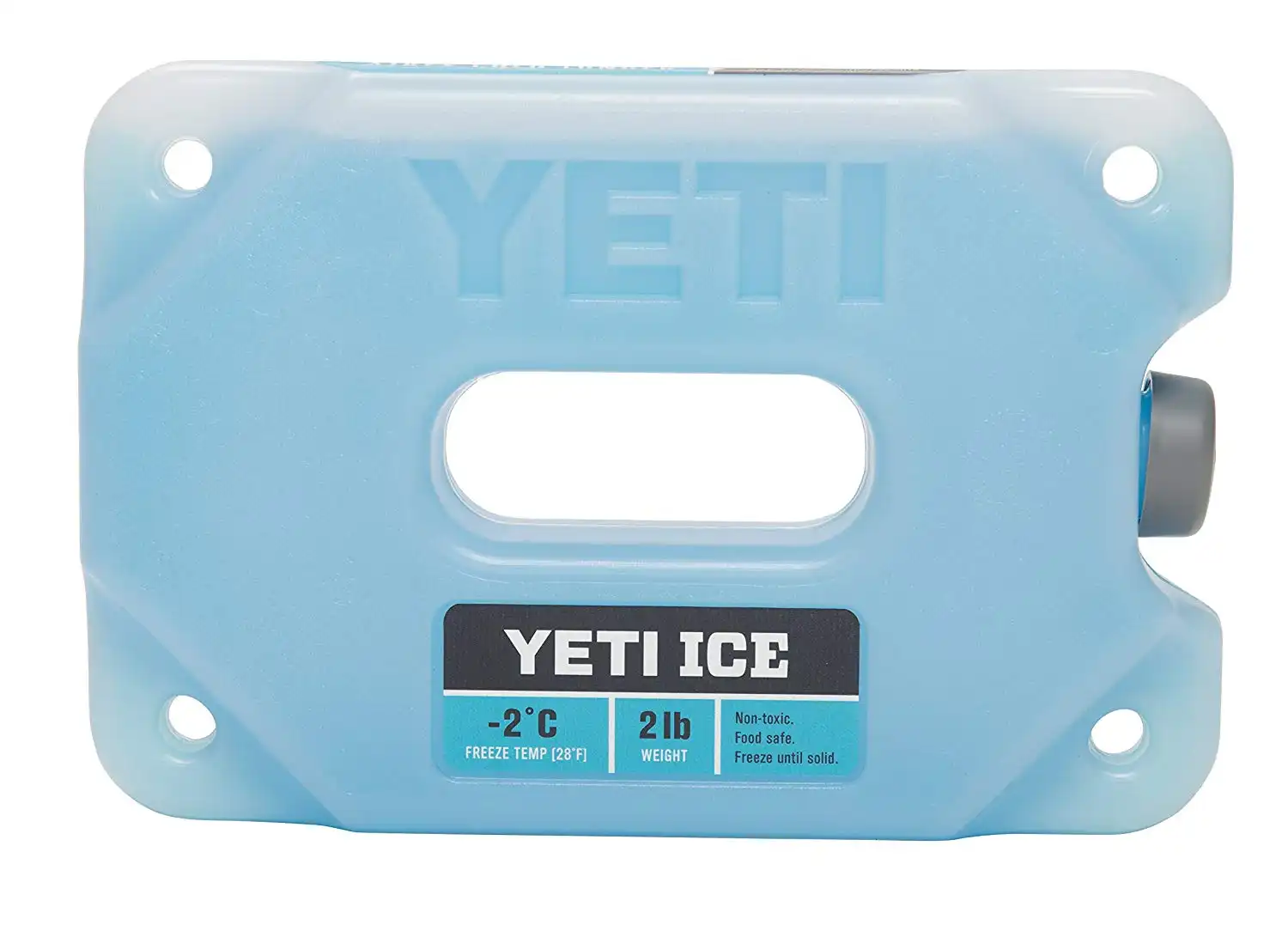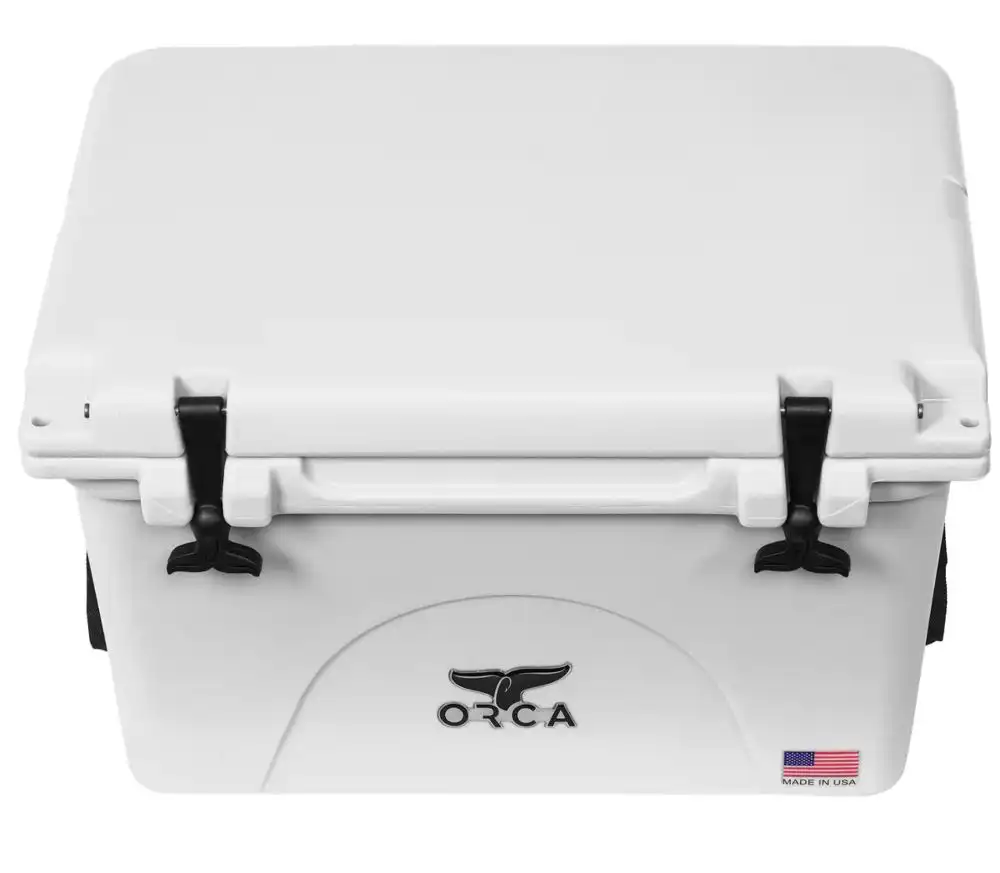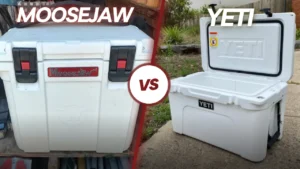You need to learn how to keep food frozen in a cooler right away. It’s not just about the contents staying cold; you want them completely frozen, and we know what will do the trick.
When packing for a camping trip, road trip or other adventure sometimes you want to keep items like meal, poultry or ice cream frozen for as long as possible in your cooler. But more often than not it ends up cold, but not completely frozen.
However, it is possible to keep food completely frozen in your cooler for days at a time, if you prepare correctly and follow a few simple guidelines.
To keep food completely frozen in your cooler you need to pre-freeze your food and pre-chill your cooler. Place your frozen goods in the bottom of a high end cooler and have them in direct contact with ice packs designed to stay colder than regular ice. To keep items frozen longer put a foam layer on top of your frozen goods and open the cooler as little as possible.
With the correct preparation, a great high-end cooler and the right packing method and ice packs you can keep items completely frozen in your cooler for 3-4 days and cold for up to a week.
If you don't pack frozen items correctly then most food will start to thaw out within 24 hours. A cheaper cooler may only keep your food frozen for 12 hours (if that).
We’ve got great tips for how to keep your food frozen in a cooler for as long as possible!
Why Doesn't Food Usually Stay Frozen In A Cooler?
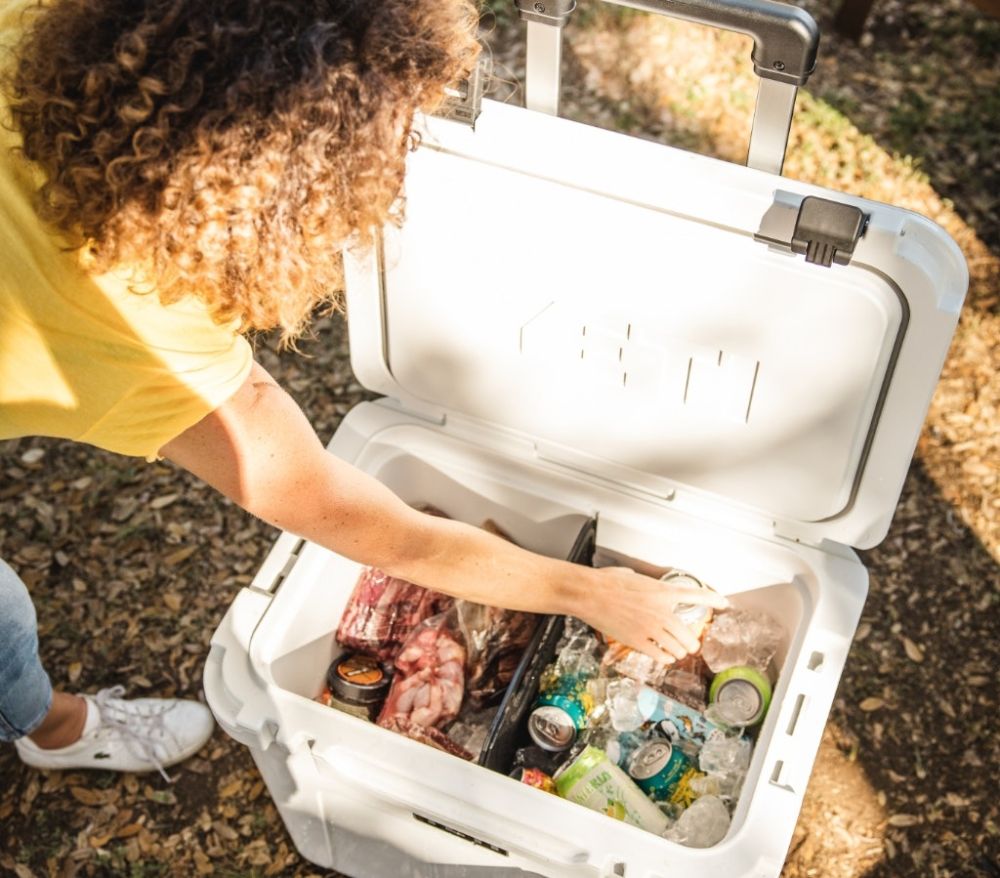
Your freezer at home (which you use to store frozen food) brings that food down to a chilly 0ºF (-18ºC).
This is MUCH COLDER that the temperature (32ºF or 0ºC) we often think of as freezing and this colder temperature is needed to keep many foods frozen.
At 32ºF (0ºC) most food items will be completely thawed and so you actually need to keep items colder than this if you want them to stay frozen.
Coolers will usually keep food and drinks at around 32-39ºF (0-4ºC) even when they have ice in them and this isn't quite cold enough to keep food frozen.
Once taken from the freezer and put into your cooler food will instantly start warming up and will quickly thaw.
The only way to stop food thawing for an extended period of time is to either use ice packs like the Engel 20 – which is designed to stay at 20ºF (-6.7ºC).
This ice pack is designed to stay much colder than regular ice.
At 20ºF (-6.7ºC) it can keep food and ice cream frozen in your cooler for longer.
We'll talk more about ice packs in a bit, but these can keep food frozen where regular ice can't because they are designed to stay colder than regular ice.
The reason can be a bit tricky to understand but just know that yes they do actually work! If you want to learn more click here to learn which ice packs really are colder than regular ice.
1. MOST IMPORTANT: Use Saltwater or Ice Packs Designed To Stay Colder Than Ice
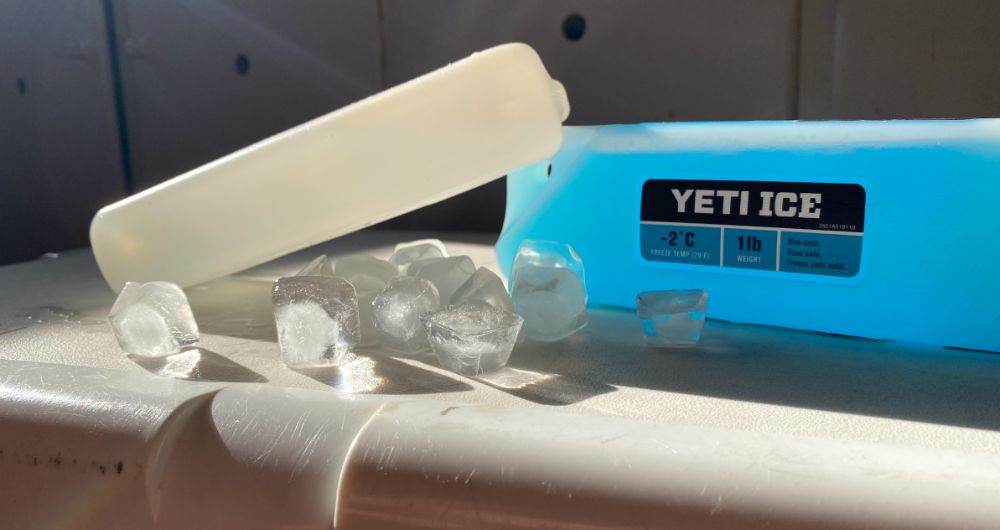
While we'll offer a lot of great suggestions in this article about how to keep food frozen in your cooler for longer if you want to keep food frozen and you only take one bit of advice let it be this one.
Regular ice in a cooler does NOT stay cold enough to keep food frozen. You must either add salt to the ice or use ice packs designed to stay colder than regular ice if you want to keep food frozen for any extended period of time.
Saltwater has a lower freezing point than fresh water, so using saltwater ice packs or adding salt to your ice can help make your ice last longer in your cooler.
While you might find that the saltwater ice packs melt a little faster, they will stay at sub-freezing temperatures for longer than normal ice.
Place these saltwater ice packs touching the food you want to keep frozen so the extreme cold gets transferred into your food.
Don't believe me that saltwater ice packs stay colder and keep food frozen better than regular ice packs? Then watch the video below to see proof.
While it may seem odd to recommend an ice pack that melts faster, the melting ice packs stay colder than a frozen block of ice, loose ice or even frozen water bottles and this is needed to keep items frozen.
Remember, it takes temperatures COLDER THAN 32ºF (0ºC) to keep food frozen in your cooler.
Salt lowers the temperature of ice and makes it colder and helps it to stay colder for longer. With enough salt your ice will stay at around 16ºF (-9ºC) which is more than cold enough to keep items frozen.
Even ice packs like Yeti ice, which are designed to melt and stay at 28ºF (-2ºC) are often enough to keep your items frozen. Click here to see my list of the best ice packs for your cooler and pick on that suits you.
Yeti Ice Packs are extremely durable, fast freezing and are designed to fit perfectly in Yeti coolers.
They will stay colder than regular ice at -2ºC/28ºF helping items stay frozen for longer
2. Use A High-Quality Cooler

How to keep food frozen in a cooler? We suggest using a high-quality cooler. There are several excellent coolers like Yeti on the market that can hold ice for 5+ days.
The better the cooler is the more heat it will keep out and the longer your items will stay completely frozen.
You want to make sure your cooler has at least 2-3 inches of insulation and a rugged build can’t hurt either – especially if you want to take your cooler on hunting or camping trips!
The better a cooler is at ice retention the better it will also be at keeping food completely frozen. If you don't already have a high end cooler then you should check out the list of the best coolers for ice retention. Some of these coolers can hold ice for 5-10 days at a time and can keep your items frozen nearly that long!
One of my favorite brands of cooler and the ORCA Coolers. They are USA made, backed by a lifetime warranty and keep ice better than almost any other cooler on the market.
Orca Coolers have some of the best ice retention of any cooler on the market, are made locally in the USA, feature a lifetime warranty and have lots of colors to choose from.
Get a well-insulated cooler designed for extended trips, and you’ll be more likely to keep your food frozen longer.
Avoid using cheap coolers and these might keep things cold for 1-3 days, but they aren't very good at keeping items completely frozen.
3. Pre-Chill Your Cooler
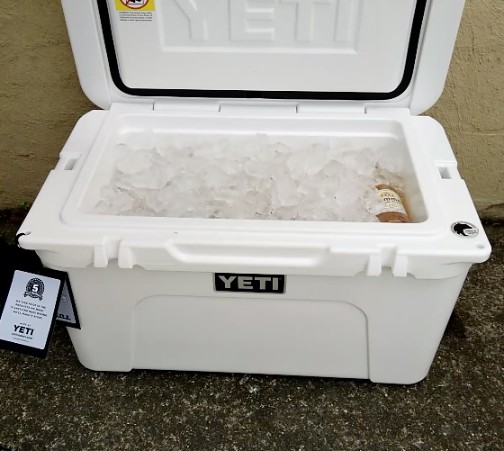
If your cooler’s been in storage, especially somewhere warm like a garage (or your trunk), it’s extremely important to pre-chill it before loading it.
Once my day took my Yeti cooler away and left it baking in the car for 3 days while he picked berries on a farm. When it was time to go home he loaded it up with fresh berries and a bit of ice and he noticed that the ice in the high-end Yeti cooler melted faster than the ice in the cheap Coleman cooler.
This is because coolers with thick insulation can absorb a lot of heat from the surrounding environment. When you put ice in them without pre-chilling the heat will be transferred from the insulation into the ice making it melt extremely quickly.
If you're trying to keep food frozen then it won't stay frozen for long in a cooler that hasn't been pre-chilled.
Coolers with thick insulation can stay warmer for longer than expected and melt ice quickly if you don’t pre-chill them!
Pre-chilling your cooler is easy. You can keep it in a cool or cold room for a few days before your trip or the night before you pack it place some sacrificial bags of ice (or blocks of ice) in there to bring it down to temperature.
If you have a high-quality, well-insulated cooler, pre-chilling it is a must if you want to keep your food frozen for any period of time.
Traveling? Check out nine tips about how to keep food frozen in a cooler during your trip.
4. Keep Frozen Foods On The Bottom Of The Cooler
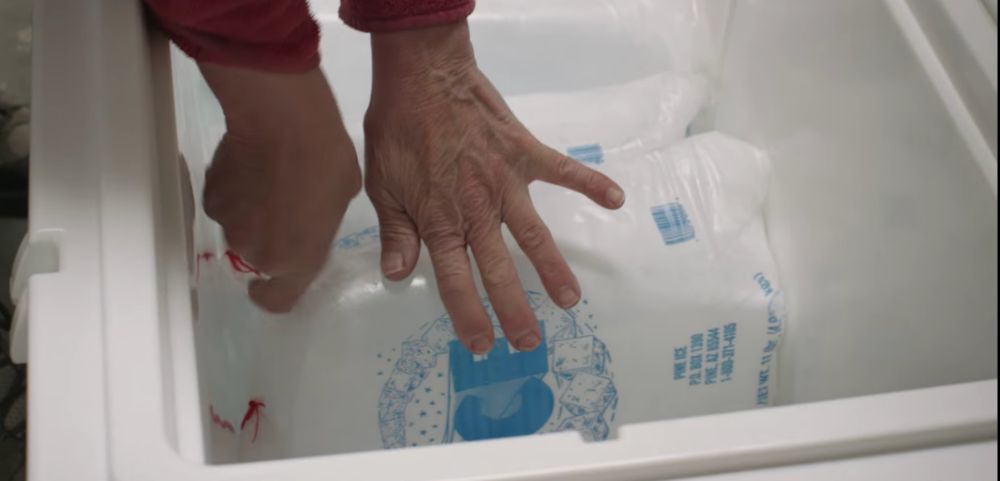
Heat rises and cold air sinks.
One of the best and easiest ways to keep your food frozen in your cooler is to keep it at the bottom!
Hot air rises, and also every time your cooler is opened the items at the top get exposed to the warm outside air.
Keeping your frozen food at the bottom of your cooler keeps it as far away from the warm air as possible.
Cold air also sinks, so the air at the bottom of the cooler is naturally going to be the coldest of any part of the cooler.
By keeping all your frozen foods together at the bottom of your cooler it will help them to stay frozen much longer than if you left them on the top.
If you've got a small cooler or lunch box then sometimes placing items in the middle (rather than the bottom) is the best option. This is because you want to keep frozen items as far away from the sides as possible as this is where most heat enters the cooler or lunch box. Read more about keeping food frozen in your lunch box, too.
5. Add A Barrier Layer
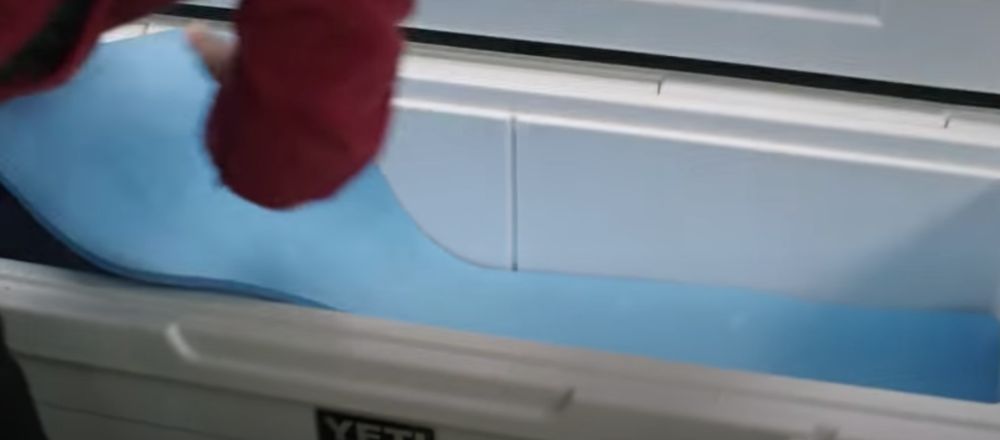
If you’re traveling with meat or other frozen good that you need to keep frozen, consider adding a barrier layer above them.
Put a foam camping mat, a towel, a piece of plastic or cardboard or even a sweater on top of your frozen foods.
Adding a barrier layer keeps your food from any air and heat that could come in when you open the cooler. It keeps the cold down the bottom trapped down the bottom and doesn't let the warmer air in.
It also provides more insulation for the frozen food and ice so that it defrosts more slowly.
6. Pre-Freeze Your Food

This might seem like a no-brainer, but if you want to keep your food frozen in your cooler, you should freeze it beforehand!
You’ll want to freeze your food for 24-48 hours before adding it to your cooler so it can get as cold as possible.
Your freezer is usually set around 0ºF (-18ºC) and it takes 24-48 hours for items to go from room temperature all the way down to this extra cold temperature.
The colder your food start out the longer it will stay frozen. So if possible turn your freeze down to it's coldest setting and put your frozen items at the very back of the freezer away from the door so they get as cold as physically possible.
If you have a deep freezer, use that to help make sure your food is truly frozen and as cold as possible.
7. Add Extra Insulation To Your Cooler
We discussed how important it is for your cooler to have good insulation. However, you can help keep your food frozen longer by adding extra insulation to your cooler.
Basically any insulation you can add to your cooler is going to improve its ability to keep items frozen and/or cold. There are lots of ways to add insulation to a cooler so it keeps items frozen for longer.
Wrapping your cooler in towels or sweaters can help keep the internal temperature down.
While you should always keep your cooler out of direct sunlight where possible if your cooler is going to be in directly sunlight for some part of the day then creating a reflectix cooler cover is one of the best ways to keep your cooler colder.
Aluminum is a great insulator of heat radiation so it'll reflect a lot of the thermal radiation from the sun's rays and less heat = less warming up of the food inside your cooler = foods stays frozen for longer.
Also the color of your cooler also plays a role in how long food will stay frozen for. So ideally you should choose a light cooler over a dark cooler if you want to keep items frozen for longer.
8. Use Dry Ice

If you can get dry ice, it’s an excellent option for keeping food frozen in your cooler.
If you absolutely must keep things completely frozen dry ice is often your best option. Dry ice is -109.2ºF (-78.5ºC) which is more than cold enough to keep food frozen and with enough dry ice you can keen an entire cooler completely frozen.
Dry ice can last for days in your Yeti cooler, depending on the size of the cooler and how much ice you use.
However, it’s important to make sure you’re using dry ice safely! You don’t want it to directly touch your food, so wrap it in a newspaper or towel before loading it into your cooler. And make sure you’re handling it with gloves and proper safety equipment. Learn how about how to use dry ice in a cooler.
9. Minimize Empty Air Space
The less air space in your cooler, the better off you’ll be! Empty air space heats up faster, so you want to be sure to pack your cooler tightly if you want your frozen items to stay that way.
The best way to do this is to ensure you’re using the right cooler size for the job. If you only have a small amount of items then often a small cooler will work better than a larger cooler.
However, if you don’t have enough food to fill the cooler, you can always use more ice or insulation to fill the gaps.
Wrapping your frozen goods in aluminum foil and tea towels can be a great way to take up the extra space!
10. Use Vacuum Insulated Tumblers or Camp Crocks
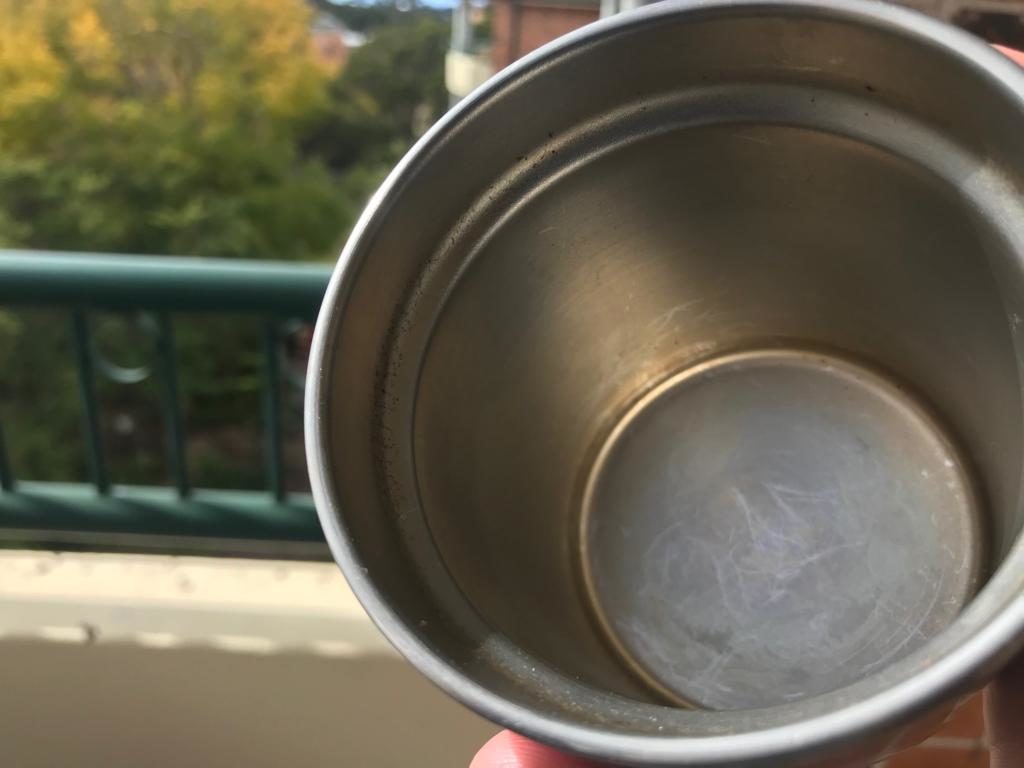
If you want to keep items frozen in your cooler then it's a good idea to put them in a vacuum insulated cup, tumbler or camp crock.
See vacuum insulation is the best insulation for keeping things frozen and works much better than the foam walls of the cooler.
Put a vacuum insulated container inside a cold cooler with cold ice packs or salt water ice as we previously mentioned and this is the best way to keep items frozen for extended periods of time.
Insulated tumblers or thermal cookers (which are just large vacuum insulated flasks) can be used to keep ice cream frozen without a freezer.
Below you can see a twitter thread of someone using a Yeti tumbler to keep ice cream frozen for longer.
Keep Your Food Frozen In Your Cooler
It’s not difficult to keep your food completely frozen in your cooler for 1-2 days or even up to 3-4 days using the methods we’ve outlined.
Ensure you’re using a high-quality cooler with a good insulation layer first and foremost. Prep your cooler so it’s pre-chilled, and pre-freeze your foods.
Saltwater ice packs and dry ice are great options if you have them available. Take the time to pack your cooler carefully and minimize empty space, and you’ll be able to keep food frozen for several days!
How To Keep Ice Cream Frozen In Your Cooler

One thing that can be really hard to keep frozen in a cooler is ice cream. If you want to keep ice cream completely frozen in your cooler, there are a few extra steps you can take.
The best step is to put your ice cream into a pre-chilled vacuum cup or container, like a Yeti tumbler or thermal cooker. This will help keep your ice cream cold by adding extra insulation.
Covering your ice cream in salted ice or using dry ice in your cooler can be another really good way to keep the ice cream frozen. Combining all of these methods can keep your ice cream frozen for days!
Keep Meat Frozen In Your Cooler
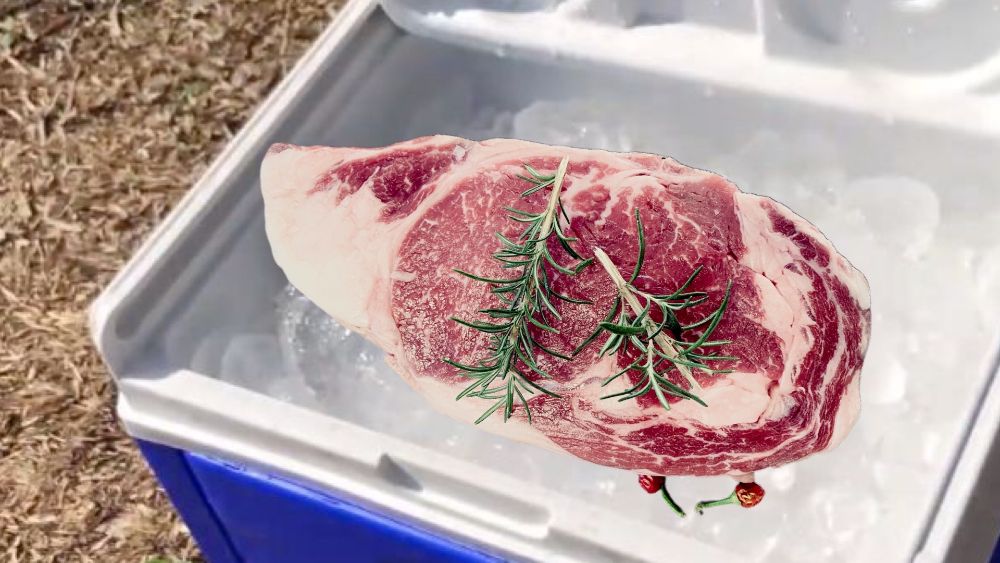
We touched on how important it was to keep your meat away from any warmth above, and why barrier layers are important. But meat can be harmful to your health if it thaws, so it’s extra important to make sure it can stay frozen.
As always, the best way to make sure your meat stays frozen during travel is to start with pre-frozen meat. Your cooler can’t freeze your meat, even if you have ice packs, so starting with frozen meat is a must.
Using dry ice or larger blocks of ice when possible can help keep your meat frozen for longer. If you fill the gaps between your meat or between the ice blocks with ice cubes, you can help keep warm air from circulating.
And as always, make sure you’re using a high-quality cooler! While you can use a styrofoam cooler to keep meat frozen for short distances or while traveling on a plane, a high-quality cooler is essential if you want your meat to stay frozen for more than 24 hours.
Learn more about how to travel with frozen meat.
Summary
You know how to keep food frozen in a cooler now. Simply follow these tips:
- Pre-chill a high-quality cooler
- Fill it up completely and minimize empty air space
- Pre-freeze your food and keep it at the bottom of the cooler
- Use appropriate ice packs and add barrier layers of foam
Start the prep work 24 to 48 hours in advance to ensure your food stays frozen in a cooler instead of just cold.

